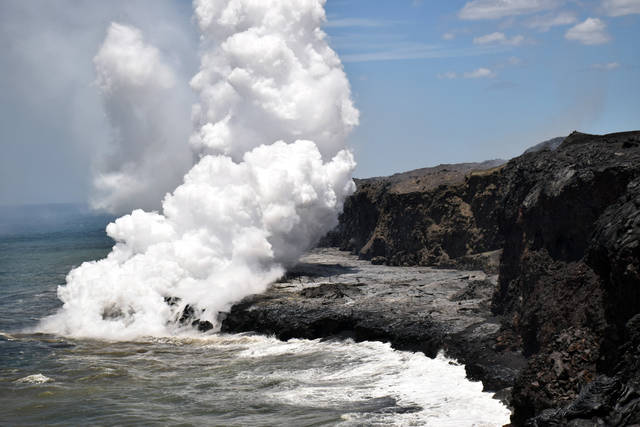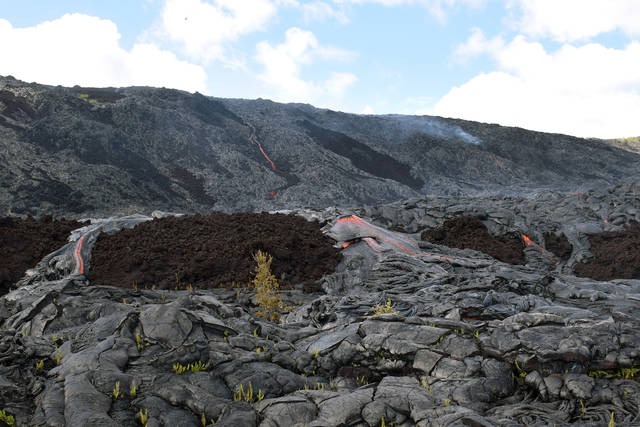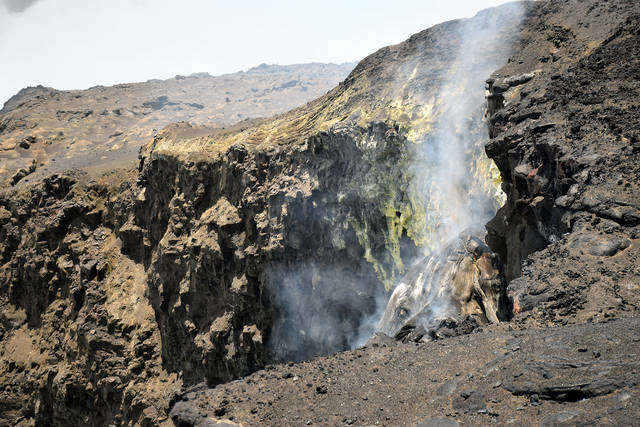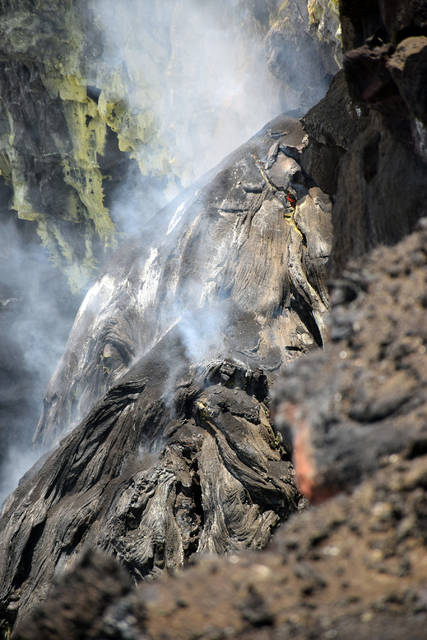The lava delta at Kilauea Volcano’s Kamokuna ocean entry continues to grow. ADVERTISING The lava delta at Kilauea Volcano’s Kamokuna ocean entry continues to grow. On Tuesday, activity was concentrated near the southeastern tip of the delta, creating a thick
The lava delta at Kilauea Volcano’s Kamokuna ocean entry continues to grow.
On Tuesday, activity was concentrated near the southeastern tip of the delta, creating a thick steam plume that afforded only occasional glimpses of lava entering the ocean. Small littoral bursts were common as molten lava interacted with the cool seawater. Many narrow cracks parallel to the sea cliff could be seen on the delta surface, according to the Hawaiian Volcano Observatory.
Visitors to the ocean entry are cautioned of significant hazards besides walking on uneven surfaces and around unstable, extremely steep sea cliffs. Venturing too close to an ocean entry on land or the ocean exposes you to flying debris created by sudden explosive interaction between lava and water.
Also, the new land created and the loose material can easily be eroded away by surf, causing the new land to become unsupported and slide into the sea. This occurred most recently on May 3.
Meanwhile, the March 5 breakout of the 61g flow continues to produce active surface flows on and at the base of the pali. The slow-moving pahoehoe flow front was approximately 400 yards beyond the base of the pali Tuesday afternoon.
The flows pose no threat to nearby communities at this time, scientists said Thursday morning.
At Kilauea Volcano’s summit, the lava lake as of Thursday morning was about 82 feet below the Halemaumau Crater floor. Scientists said the lake is expected to continue dropping in concert with deflation of the volcano.
At Puʻu ʻOʻo, a small lava pond persists on the west side of the crater. A long term trend of slight inflationary tilt has been recorded on the flank of Puʻu ʻOʻo cone over the past month.
During inflation, magma rises into the summit reservoir, according to the observatory. The summit reservoir enters the deflation portion of the cycle when the magma moves laterally into a rift zone and either erupts or is stored there.







